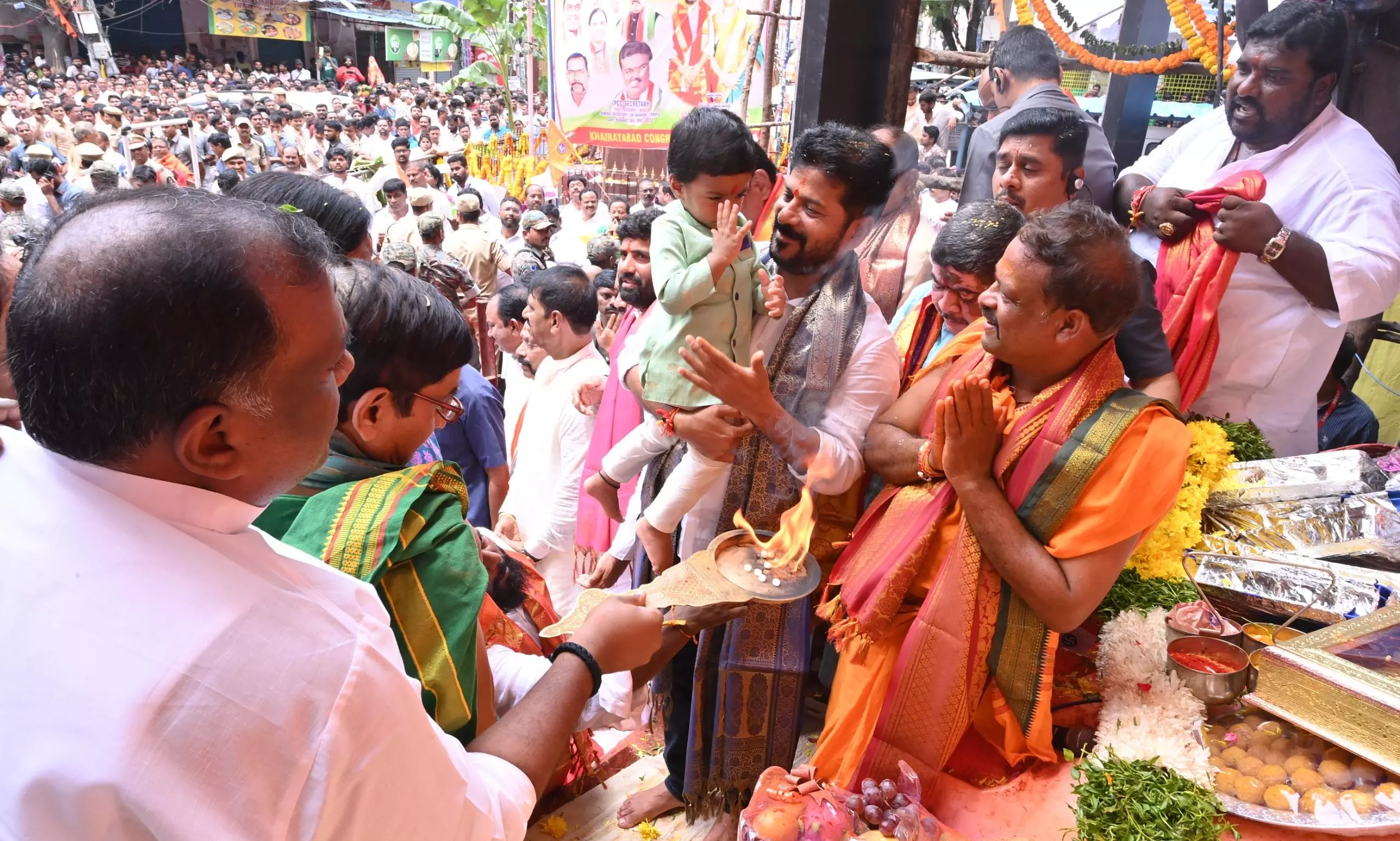Ganesha Festival Gets a Great Start in Hyderabad

Hyderabad: Ganesh Chaturthi on Saturday set off 11 days of celebrations which will culminate in the immersion of idols next week. Apart from some cities in Maharashtra such as Pune and Mumbai, Hyderabad is one of the best places in India to witness these celebrations.
The prime attraction has always been the enthusiastic participation of youngsters. Apart from performing puja at their houses, people dressed in traditional attire joined community pujas at pandals.
The highlight of the celebrations was the city's tallest Ganesh idol, the 70-foot Bada Ganesh at Khairatabad. This is the 70th year since the first Ganesha idol was first installed at this mandap.
Chief Minister A. Revanth Reddy, along with his grandson, offered prayers and brought with him a large offering of 'laddus.'
Many attendees opted for the Metro Rail to reach Khairatabad to avoid traffic. Sahithi, Rukmini, Sneha, and friends, who travelled from Nagole, said, "It's convenient, as we can get down just a few yards from the Ganesha mandap."
Throughout the city, Ganesha idols have been installed in every lane, apartment, gated community, and office and the organisers distributed parasad.
Many families have chosen eco-friendly clay idols. Some companies gifted clay idols to employees and associates to promote environmental awareness. The installation of idols made of seeds was a symbolic gesture to encourage sustainability.
In Ramnagar, the Sri Ganapati Friends Association, led by a group that includes a Muslim member, has been installing a Ganesh idol for the past 19 years. Mohammed Siddiq shared, "We have no religious differences; we are like brothers. For these 11 days, we all take part in the puja, and even our family members join in the festivities."
The Ganesha festival, though initially performed at homes, became a means of social gathering for the first time in Pune, when Bhausaheb Laxman Javale installed the first sarvajanik (public) Ganesha idol in 1892. The practice got wide publicity when freedom fighter Lokmanya Tilak, championed it as a means to circumvent the British government ban on religious gatherings.
According to the Freedom Struggle in Hyderabad Volume 3, the practice of sarvajanik Ganesha festival spread to Hyderabad in 1885, when pandals were set up at Shahalibanda by Shivram Shastry Gore and at Chaderghat by a group of students.
